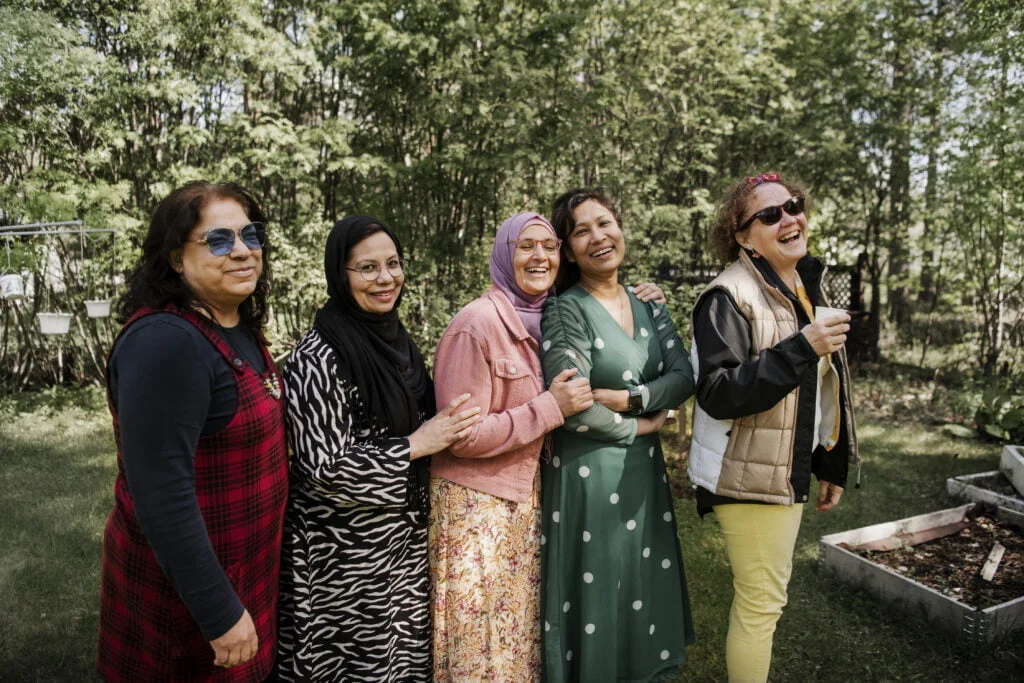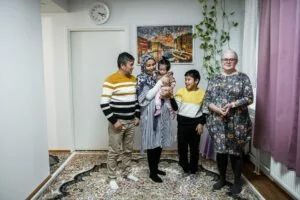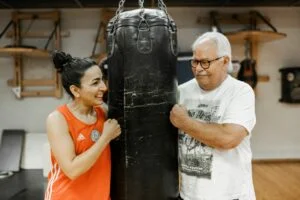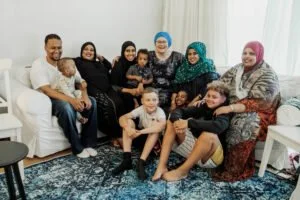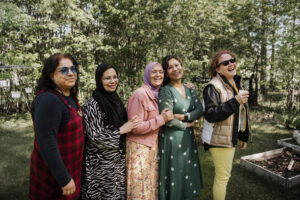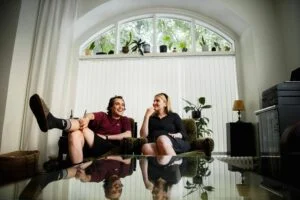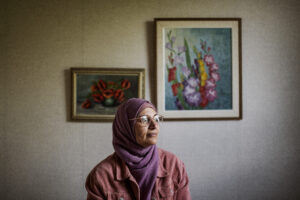Our taxi turns to a residential area in Rovaniemi and we hop out into the sunshine. We march straight to the backyard of one of the houses without walking through the house or knocking on the door. Laughter fills the air, someone pours us coffee, someone else shows pictures on their phone, another person takes a seat on a deck chair next to us, another points to the plants in the garden boxes and talks of the women’s garden day they organised last summer.
Soon the back door opens and a woman dressed in a green dress and carrying a laptop shouts out:
“Everyone, we only have ten minutes until my seminar speech!” Everyone spurs into action: women rush to the lawn and pose for a picture in front of a tree dressed in the lush green leaves of early summer. Everyone is smiling, and the fresh Lapland air is filled with warmth. This is AMA.
The women in the yard are Intisar Mushaileh, Shaista Tasneem, Yousra Alasaad, Riitta Kemppainen-Koivisto and Nafisa Yeasmin, board members of the Arctic Immigrants association, also known as AMA. They have all been involved in the association since its foundation on Valentine’s Day 2014.
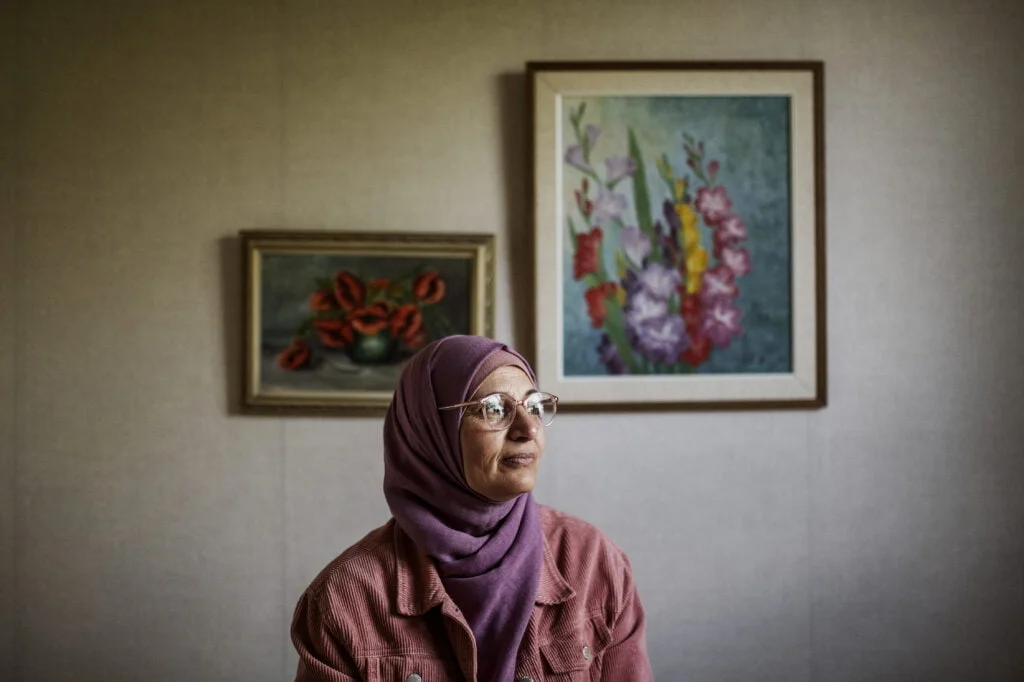
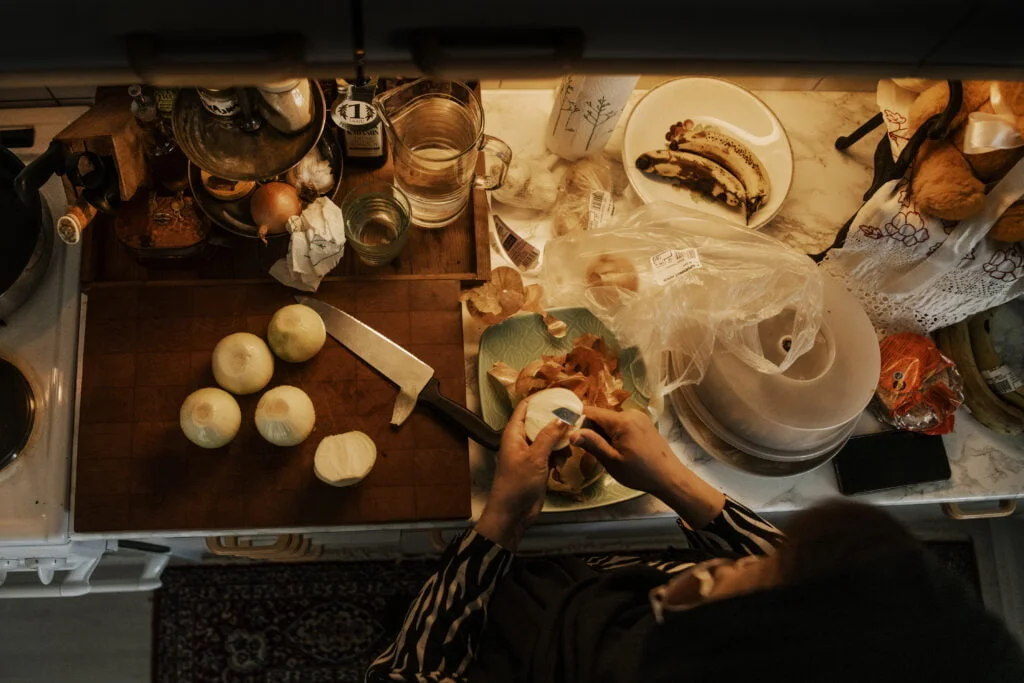

From a concept to an association that is open to all
AMA took its first steps in early 2014, when Riitta Kemppainen-Koivisto, the association’s secretary who worked as a journalist at the time, was working on a poll related to immigration and ended up interviewing Nafisa Yeasmin, a researcher at the Rovaniemi Arctic Centre. The conversation between Riitta and Nafisa, who is originally from Bangladesh, turned to people living in Rovaniemi who come from different countries and how scattered the different groups are. Nafisa came up with the idea of a community that would bring these people together. Riitta happened to have experience in establishing an association, and soon the two had posted a notice in the local newspaper, inviting others to join them to promote internationality in Rovaniemi. Next, a founding meeting was held at the city library to come up with a name for this non-political and non-religious association. The main principle of the association, officially established on Valentine’s Day, was clear from the beginning: the association would be open to all.
The association was set in motion and the first order of business was to raise funds for it actively and systematically: AMA members contacted different networks and people all over the city, organised events at various locations and bazaars at local shopping centres. Among other things, AMA members acquired for the Sie&Mie Keskus cooperative 150 bikes that had been left behind by asylum seekers arriving in Ivalo through Russia. When the police gave the cooperative permission to come collect the bikes, they got a truck to bring them to Rovaniemi.
“The cooperative rented out an empty room at the ground floor of a block of flats, and we invited in asylum seekers to fix the bikes so that we could give them work. And then we sold the bikes at a flea market. This not only gave us a lot of positive media coverage, but also increased public debate and awareness of immigrants and asylum seekers,” Riitta recalls.
Individuals form an entity
All of the women agree: the driving force behind AMA is all of their individual and different backgrounds, unique ideas and experiences. One of the women describes their community as a human body: one person is its brain, another its eyes, another its ears, another its legs, and so on. This way, all of the members put together form a functional entity.
Over the past seven years, AMA has brought people together through its cooking and sewing clubs, women’s multicultural festivals and garden days, food bazaars, discussion events and youth projects. According to the women, the association has given them support, a sense of communality, grassroots activities, and the opportunity to engage in advocacy work. At the moment, the association has five active board members and 78 association members.
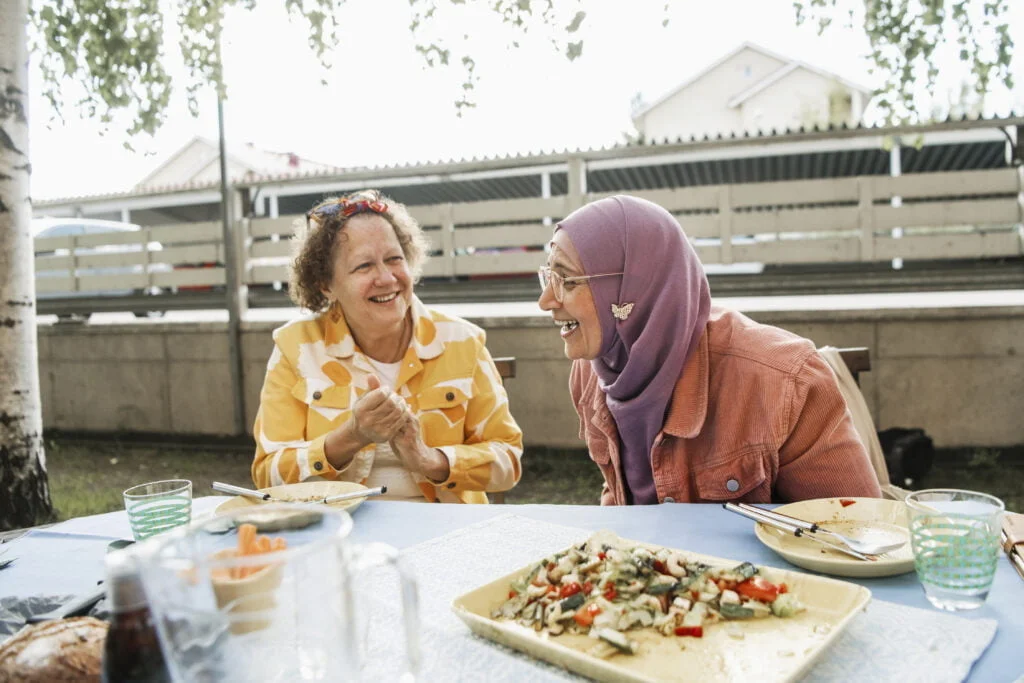
One of the most important annual highlights is the selection of the Immigrant of the Year. The selection has been made ever since the association was first established, and the criteria has included not just the candidate’s own successful integration but also helping other immigrants. The aim of the selection is to increase the voice and participation of immigrants in Rovaniemi and also to add to people’s awareness and encounters. Among others, a Somali mother who is raising her six children alone and a young man who brings light to the lives of other immigrants through football have been selected as the Immigrant of the Year. As with all AMA activities, the Immigrant of the Year is selected in a democratic and social decision-making process; the selection is made by a separate working group, and the members are not allowed to nominate themselves or their family members.
Spontaneous family community
A roar of laughter now brings us back to AMA’s base, that is Riitta’s apartment. This is where AMA members get together, organise their activities, and come up with ideas for the future. A lovely scent of food lingers in the air, and we are soon invited to enjoy some Pakistani dishes.
When we ask the women which words they would choose to describe the association, they immediately come up with community, warmth, family, light, and spontaneity. The explain their last choice: although AMA is an official association, its activities are not done strictly bureaucratically, with an eye on the calendar and meeting invitations.
“If someone wants to organise a summer trip, write a newspaper article, set up a vegetable garden or needs help, it just takes a phone call and we have soon gathered. This perfectly sums up AMA at its best and in all its simplicity: anyone and any idea is welcome in our community. We always have packets of coffee waiting in the kitchen cupboards,” says Intisar Mushaileh, Chair of the board.
This is AMA.
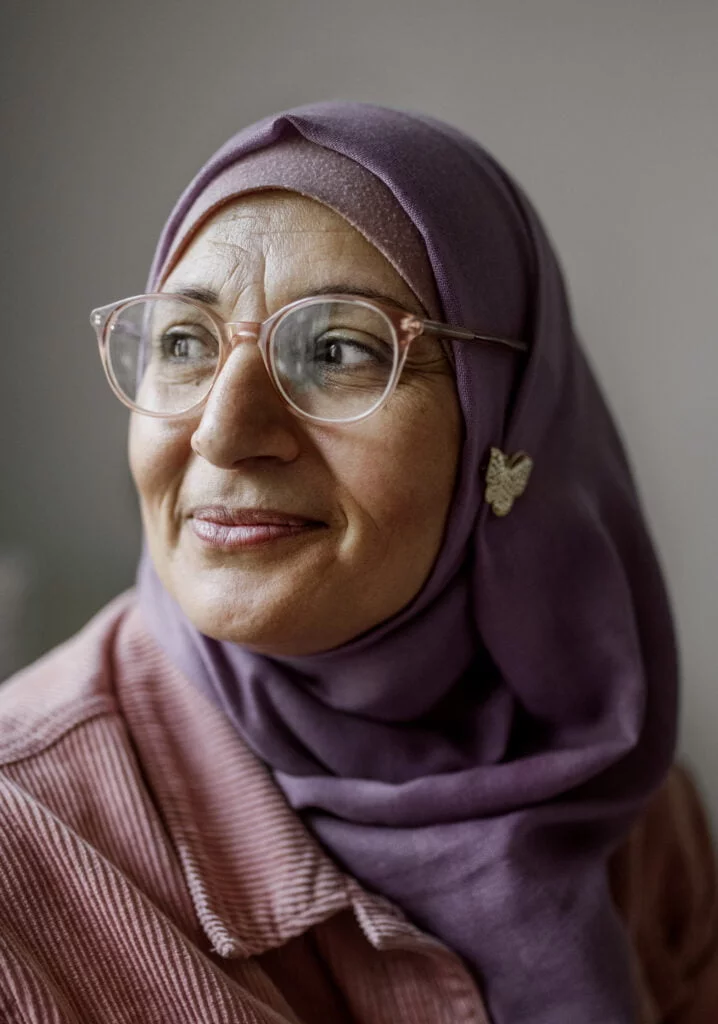
Intisar Mushaileh
Palestinian Intisar Mushaileh arrived in Finland with her husband and four children in 2009. The Finnish government had selected her family from a Syrian refugee camp to bring them to safety. In their new home country, the family settled in Rovaniemi.
Intisar grew up in Jordan, but moved to Iraq when she got married. However, her family was eventually forced to flee the conflicts of Iraq to a refugee camp in Syria, where they lived for three years.
At the refugee camp, Intisar organised tuition for children, set up an Arabic-language group for women and acted as an English-language interpreter. After arriving in Finland, she learnt the language, trained as a chef and started working as a volunteer. She also became involved in AMA activities, and has acted as the Chair of its Board since 2022. Currently, she is also working as a children’s instructor in a day-care centre and is an active member of the Islamic community.
For Intisar, AMA is like her family. Being involved in the association has empowered her: she has made a difference, had her voice heard and spoken out for women’s rights.
“The association is like a family to me: we laugh and cry together, we know each other’s secrets. A community is like a human body: one person is its brain, another its eyes, another its ears, another its legs, and so on. This way we form a functional entity, and together we can open the doors of society.”
SHAISTA TASNEEM
Shaista Tasneem first arrived in Rovaniemi ten years ago together with her family. Her family is originally from Pakistan and includes her, her husband, one daughter and three sons. Before arriving in Finland, they lived in Thailand.
After settling in Lapland, Shaista studied Finnish language and graduated as a baker-confectioner. Her husband works as a Wolt entrepreneur in Rovaniemi. The family’s daily life is focused around good food: Shaista says that everyone is involved in getting the ingredients, but she is the head chef of her family. Shaista prepares Pakistani dishes not just for her own family, but also for sale through the Rovaniemi local food network.
Shaista has been a member of AMA from the start, and is currently also employed by the association. She organises sewing and cooking workshops through the association and also writes a food blog for the AMA website. Shaista has also produced an annual calendar for AMA and dreams of editing a book of AMA blog entries.
“Although we were up against some challenges at first, our life in Rovaniemi is really good. AMA has helped us enormously and given me a lot; it has brought me dear friends, a job and, above all else, so many moments of joy and laughter.”
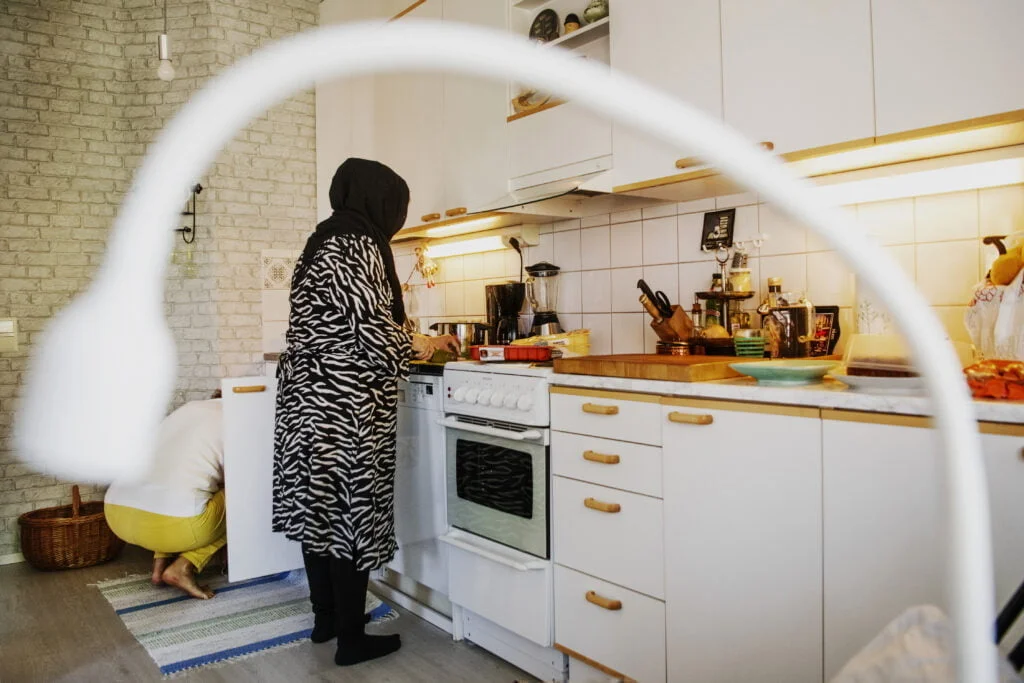
yousra Alasaad
Palestinian Yousra Alasaad was born and raised in Iraq. She studied accountancy, but ended up working as a tour guide and visited many magnificent places in this role. However, war eventually forced Yousra to abandon the comforts of her daily life and flee to Syria.
There, she managed to rebuild her life: she opened her own gallery as an artist, worked as volunteer and was asked to join the Doctors Without Borders organisation. Life was pleasant once again, but the Syrian was soon forced Yousra to flee for a second time, and she ended up in Finland.
Yousra arrived in Finland eight years ago, and has been living in Rovaniemi ever since. She studied photography in the city, and continued her work as an artist. She has been involved in the Arctic Immigrants association, AMA, since its founding meeting, and has organised, for example, food bazars and art workshops, taught Finnish to other immigrants and worked in cooperation projects with young people.
“Absolutely wonderful! That’s what AMA is! The association has given me new friends, new perspectives, new opportunities. It’s empowering – different cultures carry us all forward.”
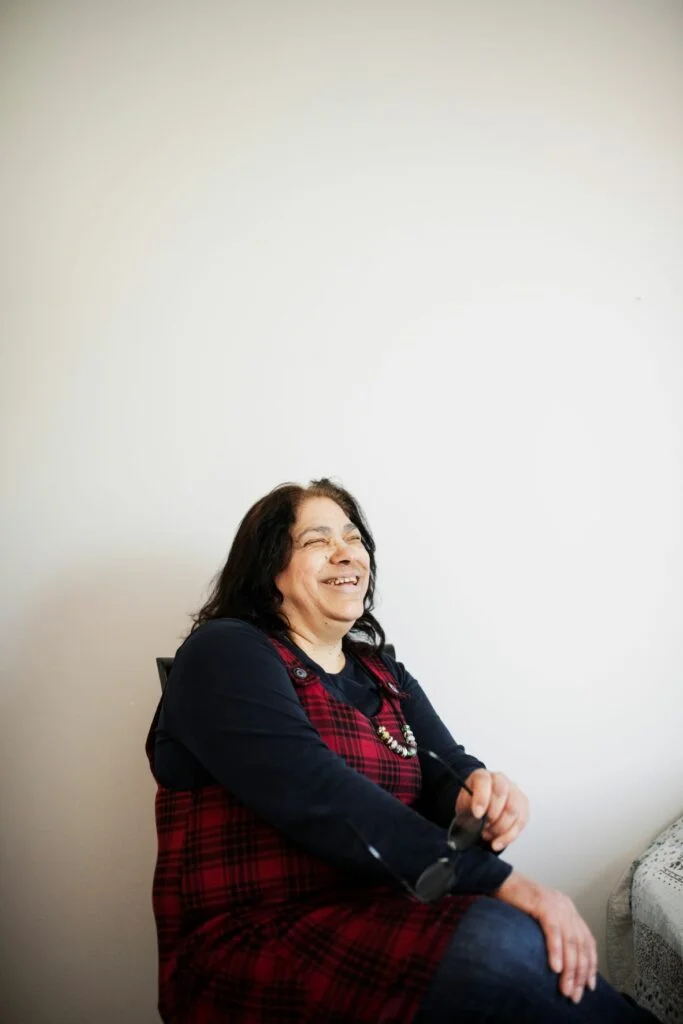
MIGRATION FACTS ABOUT PALESTINE
Palestinians have been living in forced displacement for decades. There are around 5.7 million registered Palestinian refugees, and the total number of Palestinians who have fled their homes is estimated at over 7 million. Of these, 1.5 million live in official refugee camps. The camps have been in existence for decades and have become permanent places where people are born and grow old. The prolonged and desperate nature of the situation is driving people to seek a better life outside the immediate area.
Source: UNRWA
MIGRATION FACTS ABOUT PAKISTAN
For decades, Wars and humanitarian situation in Afghanistan have meant large migration from Afghanistan to its’s neighboring country Pakistan. There are an estimated 1.2 million registered Afghans living in the country, as well as hundreds of thousands of undocumented Afghans without official residency status. In addition to Afghans, a significant number of Indian citizens live in Pakistan. People are moving from Pakistan for better opportunities for life and employment. In 2019, more than 11 million Pakistanis worked outside their country, 96% of them in the Gulf states.
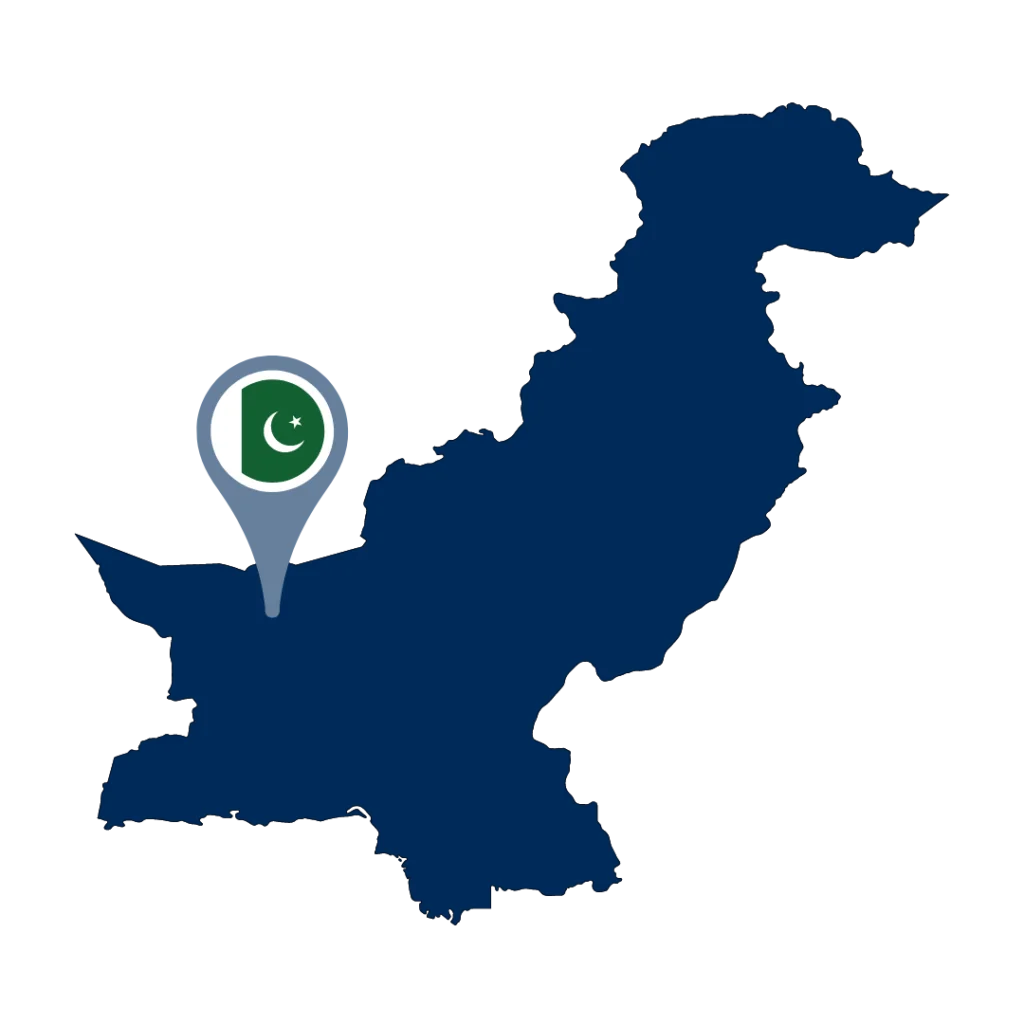
People are moving from Pakistan for better opportunities for life and employment. In 2019, more than 11 million Pakistanis worked outside their country, 96% of them in the Gulf states. Emigration is driven by poverty, insecurity, and especially recently, natural disasters. In autumn 2022, prolonged monsoon rains caused devastating floods in the country, affecting the living conditions of 33 million people.
Sources: Statistics Finland, UNHCR Data Portal, ILO
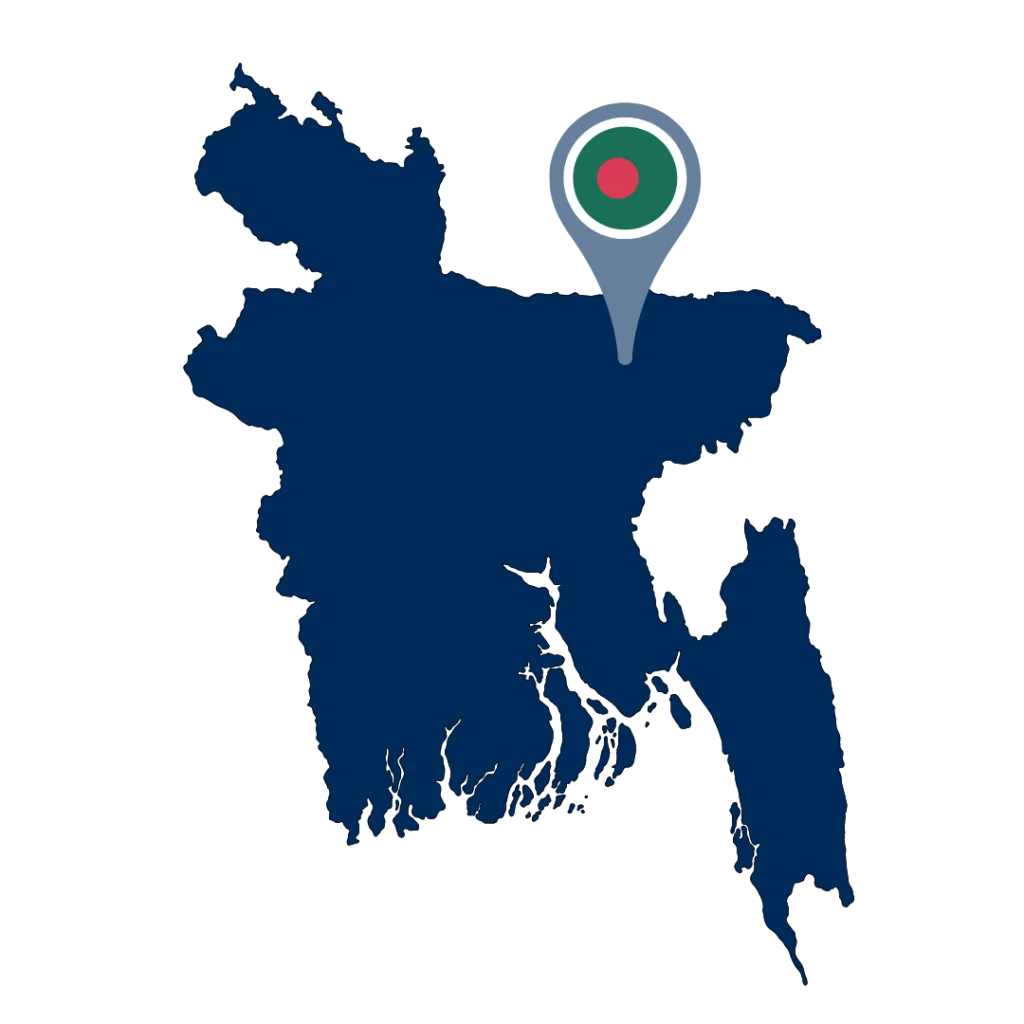
MIGRATION FACTS ABOUT BANGLADESH
The vast majority of those who have migrated to Bangladesh are from Southeast Asia, particularly Myanmar, where around one million Rohingya’s have fled persecution across the border. In total, some 2.1 million foreigners live in Bangladesh. An estimated 7.4 million Bangladeshi citizens live outside the country’s borders. About one third live in India and another third in Gulf countries such as Saudi Arabia, the United Arab Emirates and Kuwait. The main reasons for emigration are to look for work or a family member. There are around 3 600 Bangladeshi nationals living in Finland.
Sources: Statistics Finland, UNHCR Data Portal, IOM
The Whole Picture – stories behind immigration project addresses questions of belonging to Finnish society and the importance of interpersonal relationships for integration in a new country. The project also opens the global situation of immigration. Through a photo exhibition and an online campaign, the project asks, do we see individuals behind the immigration statistics and invites you to explore six different humane stories. The photographs and interviews have been collected during the summer and autumn of 2022.


